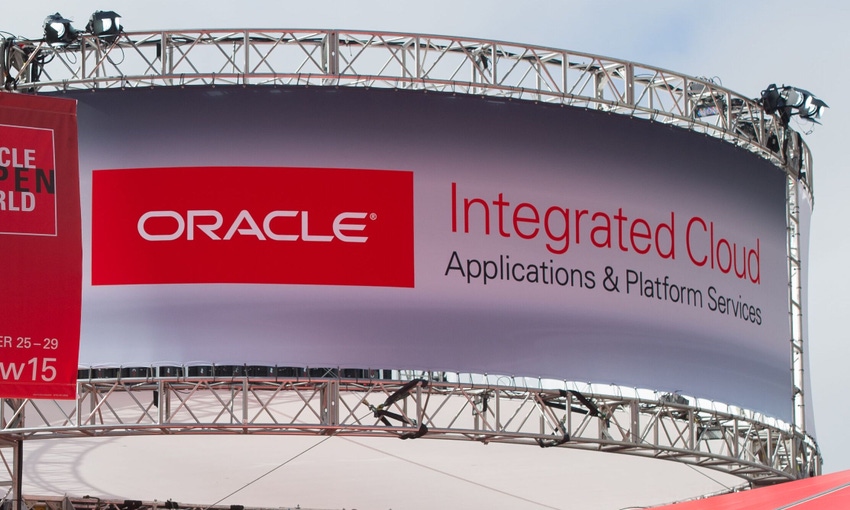Oracle has continued its journey into the cloud, expanding an interesting proposition to target the data sensitive and paranoid.
July 19, 2017

Oracle has continued its journey into the cloud, expanding an interesting proposition to target the data sensitive and paranoid.
Launched back in May 2016, the Cloud at Customer offering has been given some love to expand the proposition to include all the Oracle PaaS and SaaS products. The proposition gives organizations the choice to where their data and applications reside and a path to move business critical applications eventually to the public cloud.
“Oracle Cloud at Customer is a direct response to the remaining barriers to cloud adoption and turning those obstacles into opportunities by letting customers choose the location of their cloud services,” said Thomas Kurian, President of Product Development at Oracle.
“We are providing a unique service that enables our customers to leverage Oracle Cloud services, including SaaS, PaaS, and IaaS, both on their premises and in our cloud. Customers gain all the benefits of Oracle’s robust cloud offerings, in their own data centres, all managed and supported by Oracle.”
For those who haven’t come across the Cloud at Customer offering, admittedly Telecoms.com hadn’t either, it’s quite an interesting idea. Targeting a lucrative but somewhat niche audience, the idea is to provide a public cloud proposition on premise for customers who have either data privacy concerns, data residency restrictions from a regulatory perspective or latency fears. It might sound contradictory, but stick with us for a moment.
We had a chance to talk through the portfolio with Nirav Mehta, VP of Product Management for Cloud at Customer, and the take up of the product line seems to be going quite well. Oracle has just confirmed two significant wins in AT&T and Bank of America, but a lot of the interest is coming from public sector organizations.
The idea of on premise public cloud is to bring the benefits of cloud computing closer to the customer. Oracle provide the hardware, software and managed services, while the customer just provides the floor space, power, cooling and networking. It’s essentially leasing the idea of the cloud, but the data or applications never leave your premise. It negates any data residency regulations, as well as any data privacy concerns as you can essentially still ‘see’ it.
But this is where the benefits are, as it is still public cloud in the sense of it being an outsourced IT business model. Any updates which are made to software or applications on the Oracle cloud are automatically applied to your kit in your office, the pricing model is still the same as Oracle can do things at scale and remotely, and finally, your IT team can focus on more high value tasks as all the leg-work is being handled by Oracle engineers elsewhere. Should you wish to elevate operations to a more traditional cloud offering, you’re sort of already there, so in theory it isn’t too much of a complicated task to migrate.
Essentially it is good for companies in countries like Germany or Spain, which are more sensitive to how data is handled or where it resides, and also for public sector organizations. Imagine a hospital, it holds very sensitive information which should not reside on Oracles traditional public cloud, but the team still want to feel the benefits of constant updates and outsourced management. It’s a nice little middle ground.
But there are also downsides. Firstly, this is not public cloud in its most traditional sense. You still have to have the space and the capital to run your own data centre (cooling, power etc.). Scalability is not as simple as you would have to ask Oracle to ship out additional hardware occasionally. And finally its more long-term. Traditionally, public cloud can be a switch-on, switch-off type of partnership, however to justify the expense of shipping hardware to your office, Oracle asks customers to commit to longer term contracts.
It’s not the glorious cloud which many people are aiming for, but it is a useful stepping stone towards the holy land of digitization. There will be quite a lot of customers who will want to test out such an idea, but it is a limited number. That said, the size of some of these organizations makes this a niche area of cloud computing which is well worth exploring.
Oracle has had a tricky time finding its feet in the cloud world, and despite the claims of Larry Ellison, it is still a small-part player. But this is certainly an interesting proposition which will have a few people interested. Many people will see data breaches as a nightmare, but for Oracle it could be a good thing. Every time data is exposed, this idea becomes a bit more attractive.
About the Author(s)
You May Also Like








.png?width=300&auto=webp&quality=80&disable=upscale)


_1.jpg?width=300&auto=webp&quality=80&disable=upscale)


.png?width=800&auto=webp&quality=80&disable=upscale)